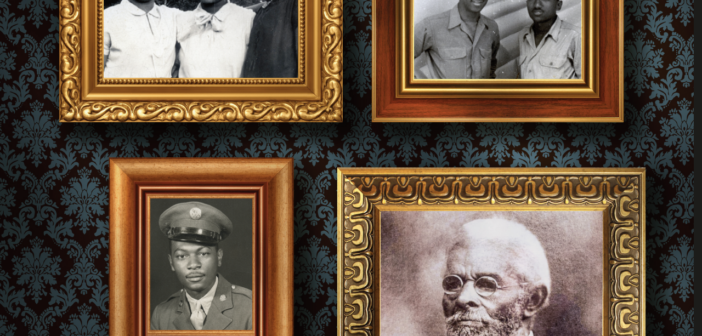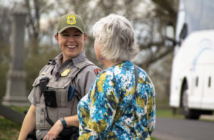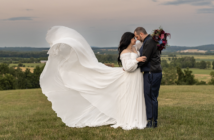Gettysburg Black History Museum Opens its Doors
By Lisa Gregory | Photography by Melissa Ring
Growing up, Mary Alice Nutter and her sisters, Jane and Cassie, would sit around the handmade wooden kitchen table—in the family since 1863—and listen to their mother, Margaret, tell stories about their people and their past.
“We grew up on that oral tradition,” says Jane Nutter, the current president of the Gettysburg Black History Museum. “Oh, if that table could talk.”
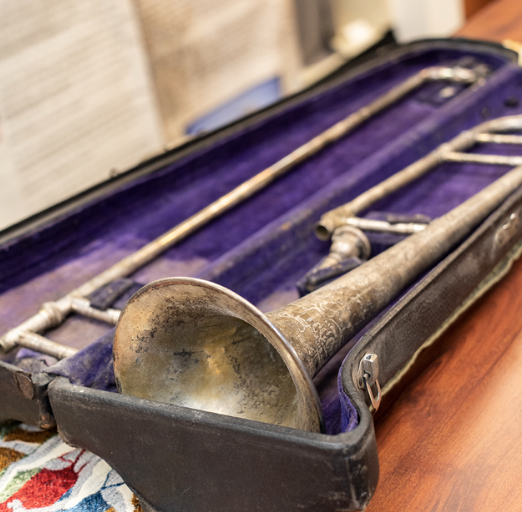
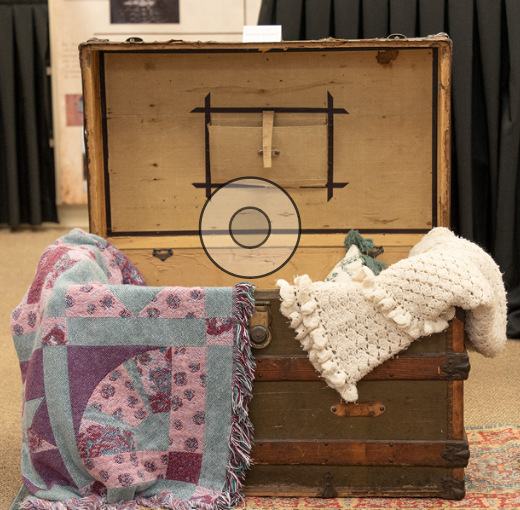

As she neared the end of her life, Margaret asked Mary Alice, her middle daughter, to keep the stories alive. “There’s very important history here that needs to be told about Black folk that lived here, and it is the story of not only Gettysburg Black folk or Black history, but American and Gettysburg history,’ she would tell us,” says Jane, who took over the museum effort five years ago when Mary Alice became ill. “‘You need to do something about these stories before they are lost.’”
Mary Alice would go on to do just that. A couple of decades ago she began the grassroots process of founding the Gettysburg Black History Museum, which recently opened its doors in the United Lutheran Seminary’s Valentine Hall. The stories that were told at that old kitchen table, encompassing all the Black community in Gettysburg, are now being told through photos, mementos, and artifacts including personal treasures, such as books and diaries and even a chair that once belonged in the home of Gen. Robert E. Lee.
The stories shared in the museum, Jane says, pertain to many of Gettysburg’s Black families, such as the Craigs, the Williamses, the Howards, the Smiths, the Johnsons, and more families with descendants still living in Gettysburg.
“We need to know our history,” says Marie Williams, who serves on the museum’s board. “And the younger people need to know their history and what their ancestors went through. It’s important that everyone has that knowledge.”
“It’s the story of our people,” says Mildred Johnson, also a museum board member.
And what a rich story it is, though one not always told, says Jane. “There is this feeling of being invisible,” she says. “But, as my mother would say, Gettysburg had a thriving Black community with professionals, businesses, social clubs, social justice advocates, and a strong church presence. We were a community that cared for and supported each other.”
Board member Elmer Shelton agrees on the museum’s importance. “It saddens me to know that there hasn’t been one, just considering the amount of history that is here in this little town. Just knowing how much of that history is not discussed, not prioritized, not spoken about.”
A walk around the Gettysburg Black History Museum is a discovery and celebration of individuals whose experiences range from world and national events to more local and personal achievements. “We are telling our story our way,” says Jane.
There are those who fought for their country, from the Civil War to the Spanish-American War to World War II and beyond. “Sam Stanton was from one of the oldest families in town, and he served in the Spanish-American War,” says Jane.
And Jane’s own family fought in the Civil War with the United States Colored Troops (USCT). “Our great-uncle, John Watts, was a private in the 8th USCT and our great-grandfather, Lloyd Watts, was a sergeant in the 24th,” says Jane. “Not many USCT soldiers were promoted to sergeant. And he was also a guard at a Confederate prisoner-of-war camp. John was wounded and eventually died from that wound.”
“I never knew about the United States Colored Troops from school,” she adds. “I learned it from my family. How could you dismiss that? How could you dismiss that the 8th United States Colored Troops were there when Lee surrendered at Appomattox? That’s big. There were so many Black men from Gettysburg who enlisted to serve their country in the USCT.”
In fact, Lloyd Frances Asbury Watts’ walking stick is on display at the museum. Following the Civil War, he would go on to teach at Gettysburg’s “colored school” as well as help found Lincoln Cemetery, a burial ground for Black soldiers. His great-granddaughter, Mary Alice, would become the first Black teacher in the integrated Gettysburg school system in 1964.
Situated near the walking stick is the Lee chair. According to Jane, the chair has been passed down through four generations of the Thomas-Watts family of Gettysburg.
“On my grandfather’s side is Richard Thomas and he was from Virginia,” says Jane. “His mother’s people were slaves for the Lees. Richard came north here to Gettysburg as a horse trainer. And at that time for any Black person to travel that far away, he had to be adventurous. He meets Laura Watts and marries her. She is the daughter of Lloyd Watts, and her uncle was John Watts, who was at Appomattox when Lee surrendered. Isn’t that something? That story is just one of many about Gettysburg Black families.”
Richard and Laura had 15 children and he, along with others—including his close friend Wiliam Biggs— were vocal in integrating the Gettysburg school system. His own daughter, Elsie Naomi Thomas Jones, was the first Black female to graduate from the integrated school system.
Also among the museum displays is the story of William Francis Penn, believed to be the first Black battlefield guide; a cherry wood china cupboard built with loving hands by Richard Thomas for his wife, Laura Watts Thomas, and filled with her china; and a large, framed group photo of a community Christmas dinner in the 1920s at Lincoln Lodge No. 145.
“Due to segregation up until the 1960s we had to create our own activities and events,” says Jane.
Churches were also important gathering places for Gettysburg’s Black community. “My mother said that people walking by could hear the singing from inside the churches drifting out onto the sidewalk,” she says.
“I feel their presence,” adds Jane of the people long gone whose stories are finally being told. A history has been preserved and shared just as Margaret Nutter wanted it to be.
And a new generation is listening.
Alisha Sanders of Gettysburg is a long-time researcher of her own genealogy and is passing on what she has learned to her children. There is much to share.
Sanders and her children are descendants of both Basil Biggs and Jessie Mathews Vann of Gettysburg, among others. Biggs, a free man and a veterinarian who lived in town during the Battle of Gettysburg, is said to have been involved with the Underground Railroad. Vann took over her husband’s newspaper, the Pittsburgh Courier, when he died. “Under her, the Pittsburgh Courier led all Negro weeklies in circulation in the United States,” says Sanders with a hint of pride in her voice.
Vann’s success as a publisher resulted in her being one of the wealthiest Black women of the World War II era. She was an early advocate of the Civil Rights Movement and served on numerous civic boards, from the Pittsburgh Chapter of the NAACP and Urban League to President Dwight D. Eisenhower’s International Development Board.
“She would come home to Gettysburg to visit family and drive up in a limousine,” says Sanders. “And my Aunt Jessie, named for her, would tell stories of going along as a little girl when she would visit Mamie Eisenhower at the Eisenhowers’ farm for tea.”
On a recent visit to the Gettysburg Black History Museum, Sanders and her children paused at the Mathews-Biggs family tree display with the names of Basil Biggs, Jessie Mathews Vann, and other names, too. “I pointed out to my children
that their first names were there,” says Sanders. “My daughter Gabby was so excited. She said, ‘That’s my name!’”
And it’s her story.
Gettysburg Black History Museum
Located inside Valentine Hall at United Lutheran Seminary
61 Seminary Ridge, Gettysburg
Open by appointment only
800-579-2429
An Inn of Their Own
Siblings Become Owners of Gettysburg Bed and Breakfast
In making history, the Campbell siblings were committed to remembering it as well.
“We wanted some place that was on the Underground Railroad,” says Christine Campbell, who along with her brothers Patrick and Stephen, purchased the Keystone Inn and, in doing so, made it the first ever Black-owned bed and breakfast in Gettysburg.
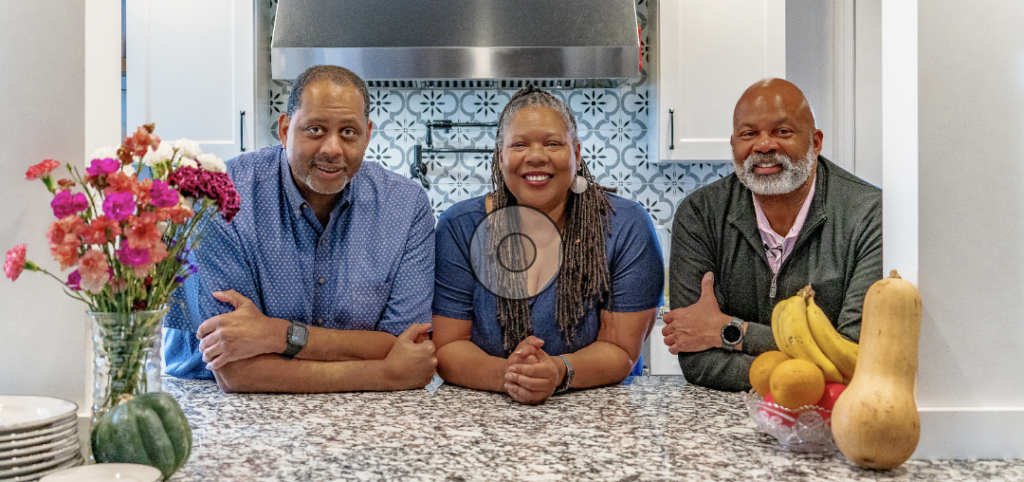
The siblings also wanted a place to celebrate their own large extended family. “Our home base is Washington, D.C.,” says Christine. “We needed a place big enough for all of us to gather for the holidays. None of our individual houses were big enough.”
And there was another reason. “I have wanted to own an inn for a while,” she says, smiling.
Bringing together their individual areas of expertise—Christine has overseen housing programs for most of her career, Patrick is in business, and Stephen is an architect—the trio purchased the 109-year-old home in August 2020. The initial owner of the house was Clayton S. Reaser, a furniture manufacturer in Gettysburg.
“When we all walked into the Keystone Inn, we were like ‘This is it,’” says Stephen. “The character, the woodwork, the spaces, the high ceilings. Yeah, this was it.”
Renovations included remodeling the kitchen and expanding the dining area to create a larger space.
The garage was converted into the Carriage House for family gatherings and business meetings.
The eight rooms include the Basil Biggs room, named in honor of the free man who lived in Gettysburg during the battle and was believed to have been involved with the Underground Railroad. And, according to Christine, the inn has already had Black reenactors inquire about staying there.
“As our guests would come through and see that we are African American, they would ask us about the African-American history,” says Patrick. “So, we started asking the tour guides, ‘Can you throw in some of the African-American history?’ And they were really excited to do it.”
The siblings say they are pleased to have chosen to buy an inn in Gettysburg, which they say has so much offer. “It’s a foodie town,” says Christine. “It’s a little bit of a theater town. There are wineries. There is so much to do.”
Jane Nutter, president of the newly opened Gettysburg Black History Museum, couldn’t be more pleased for the siblings and their ownership of the inn. “It’s a big deal, and I am so very proud,” she says.
The Keystone Inn Bed & Breakfast
231 Hanover St., Gettysburg
keystoneinnpa.com | 717-339-6596

